Springtails
ID
ENTO-23NP (ENTO-538NP)
Introduction
Springtails, also known as collembola (Class Collembola), are very small arthropods that share some characteristics with the insects, but they aren’t classified as insects. Most springtails have a forked appendage at the tip of their abdomens that they release to catapult themselves through the air when disturbed, seemingly to disappear, which is how they get their common name.
Description
Springtails are small, wingless hexapods rarely more than 0.2 inch (5 mm) long. Springtails show a wide range in body shapes and coloration. They are often pale brown, gray, or cream colored. Some have patterned or mottled markings (Figs. 1 & 2) and a few have colorful metallic scales. Some species are smooth with few hairs, but others have stiff hairs that give them a bristly appearance (Figs. 2, 3 & 4).
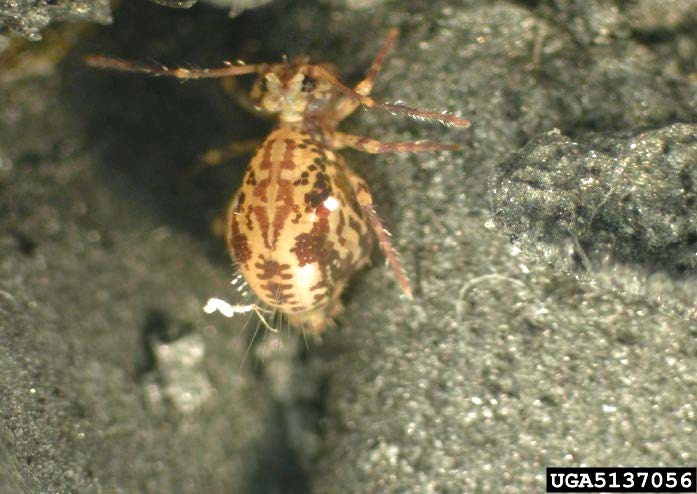
Many springtails have elongated, cylindrical bodies (Figs. 3 & 4), but others can be globular or dumpy in shape (Figs. 1 & 5) or somewhat flattened (Fig. 6) or. Most springtails have elongated antennae, but some species have shorter, stubby antennae (Fig. 6).
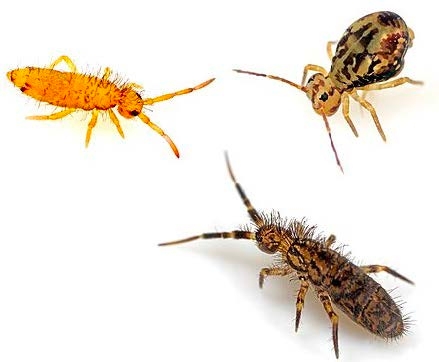
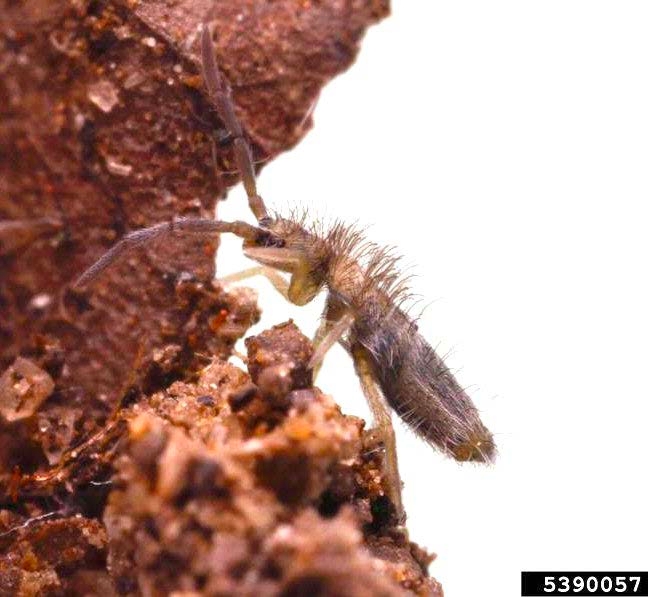
Life History
Springtails have an incomplete life cycle of egg, immature, and adult stages. Immature springtails look like adults, only much smaller. Outdoor populations are often high, up to 100,000 per cubic meter of surface soil or many millions per acre.

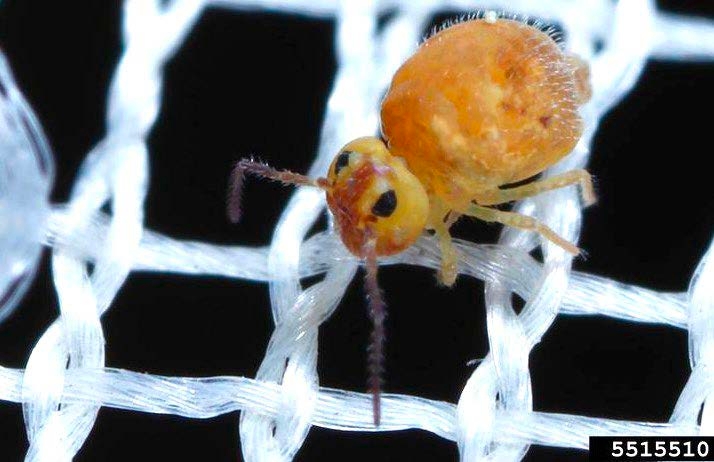
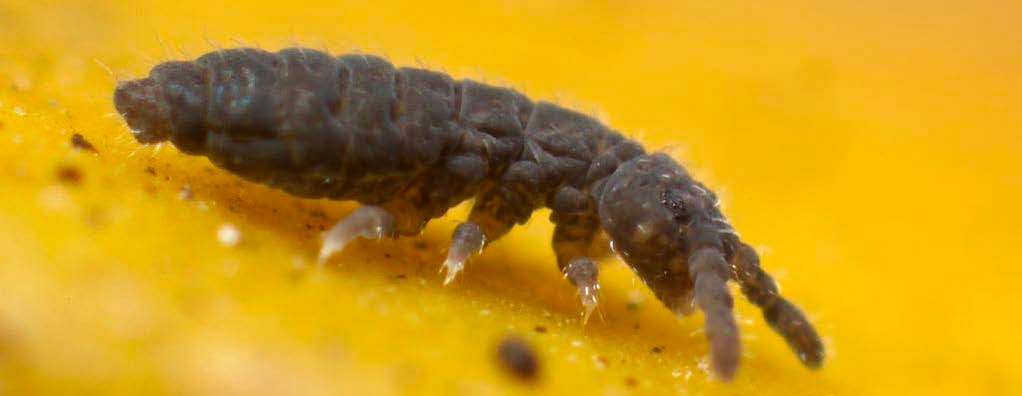
Life History
Springtails have an incomplete life cycle of egg, immature, and adult stages. Immature springtails look like adults, only much smaller. Outdoor populations are often high, up to 100,000 per cubic meter of surface soil or many millions per acre.
Habitat
Springtails are cosmopolitan and generally found in places with moist soil with organic material and high levels of humidity, which they need to survive. Outdoors they can be found in leaf litter, under tree bark, in the soil, and around the edges of ponds and lakes. Some species are found on the surfaces of water or on snow. Indoors, spring tails can be found in damp basements and bathrooms, on the soil surface of potted houseplants, or wherever sufficient moisture can be found.
Springtails have chewing mouthparts and generally graze on organic matter such as decaying vegetation, leaf litter, and mold. They are an important component of soil ecosystems, breaking down organic matter and serving as prey for other predators. A few species of springtails are predators of other soil fauna.
Damage
Springtails they are harmless to humans and animals and are only a nuisance pest in the home. Some species may damage the tender foliage or roots of garden plants when populations are very high, but they are mostly a concern in greenhouses and mushroom cellars. One species known as the lucerne flea (Sminthurus viridis L.) is an agriculture pest of alfalfa and grain crops in Australia. Homeowners who overwater their houseplants may blame springtails for the decline and death of a plant, but excessive watering and not the springtails probably caused the plant’s death.
Control
Springtails cannot live without sufficient moisture. When springtails are found in the home, address moisture and humidity issues to discourage their establishment. Run dehumidifiers and increase ventilation as much as possible. Clean grout and weatherstripping to remove mold and mildew, which springtails eat. Avoid overwatering houseplants so that the soil dries out and the springtails either leave or die. Clusters of springtails can be vacuumed up when seen. Managing moisture levels in the home is more effective than using insecticide sprays against springtails.
Revised
Theresa A. Dellinger, January 3, 2022.
Virginia Cooperative Extension materials are available for public use, reprint, or citation without further permission, provided the use includes credit to the author and to Virginia Cooperative Extension, Virginia Tech, and Virginia State University.
Virginia Cooperative Extension is a partnership of Virginia Tech, Virginia State University, the U.S. Department of Agriculture (USDA), and local governments, and is an equal opportunity employer. For the full non-discrimination statement, please visit ext.vt.edu/accessibility.
Publication Date
January 6, 2023



